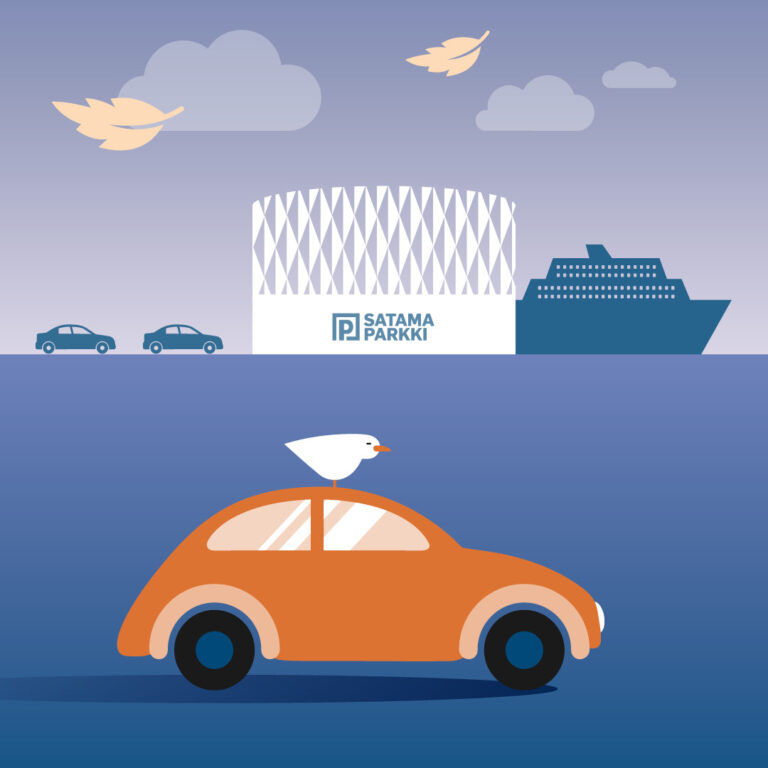
Changes in different port areas
The development programme will concentrate Tallinn traffic to West Harbour and Stockholm traffic to Katajanokka Harbour. The South Harbour area will be made available to city residents for other uses. The development programme introduces reforms for all ports in Helsinki.
WEST HARBOUR
West Harbour will become a hub for sea traffic from Helsinki to Tallinn. It is the Port of Helsinki’s most important harbour in terms of economic impact, and in the 2030s, the vast majority of passenger transport will depart from there. The development programme consists of three parts in West Harbour:
Harbour tunnel: The harbour tunnel constructed between West Harbour and Länsiväylä will significantly improve the accessibility of West Harbour and move both cargo transport and a significant proportion of car traffic in the harbour in the Jätkäsaari and Ruoholahti areas underground. Learn more about the tunnel here(linkki tunnelisivulle)
Jätkäsaari Maritime Centre: The new Maritime Centre will be built in the place of the current T1 terminal. In addition to terminal facilities, the new terminal will be designed to house commercial, office and parking spaces and services. The Maritime Centre is closely linked to the construction of the harbour tunnel, as the southern opening of the tunnel is planned to be located under the new Maritime Centre. Therefore, the construction schedule of the Maritime Centre will be coordinated with tunnel construction.
Quay and field area changes: The quay and field arrangements in West Harbour will also be renewed. The changes will create long-awaited additional space in the harbour area, which will allow for the harbour area’s internal traffic to be reorganised to better correlate with ship schedules. The renovation work of the quay and field areas requires careful staggering, as the operational activities of the harbour must continue undisrupted throughout the construction project.
The changes to be implemented in West Harbour will ensure that the Port of Helsinki and its customer numbers have room to grow in the coming decades.
KATAJANOKKA
Passenger and car ferry traffic to Stockholm will be concentrated in Katajanokka Harbour in the early 2030s. At the same time, Katajanokka’s current passenger terminal will be reformed to serve passengers and two shipping companies. The Katajanokka quays will also be made available to smaller international cruise ships.
The reforms will significantly reduce vehicle traffic in Katajanokka Harbour, as vehicle traffic serving Stockholm traffic is approximately 75% less than that of the routes to Tallinn. The reforms will therefore also reduce port-related car use in Helsinki city centre.
In the 2030s, Katajanokka Harbour will be the main port for Stockholm traffic.
SOUTH HARBOUR
When passenger and car ferry traffic to Stockholm is transferred from South Harbour to Katajanokka, almost all of the passenger ferry traffic will be removed from the Port of Helsinki area. The common goal of the City of Helsinki and the Port of Helsinki is to open the South Harbour area for more diverse use for residents. The plan is to make Makasiiniranta in South Harbour part of the pedestrian city centre and the seaside trail along the shores of Helsinki and the location of the new architecture and design museum.
Only international cruise traffic and potential for high-speed vessel traffic will remain in the port area.
South Harbour will be part of the pedestrian city centre in the future. It will only serve as a harbour for smaller cruise ships.
VUOSAARI
The objective of the Port of Helsinki is to enable the growth of cargo traffic in Vuosaari Harbour. While the operations of harbours in the city centre are being centralised, planning is also underway on the expansion of the Vuosaari Harbour field in the 2030s to meet the needs of future cargo traffic.
The Port of Helsinki is the main port for foreign trade in Finland. The cost-effective and undisturbed flow of Finnish exports to the world ensures the success of Finland as a whole and plays an important role in the security of supply of Finland.
As part of the development programme, the field area of Vuosaari Harbour will be expanded and the required additional space for transport will be created with a sea filling of nearly 10 hectares. The finished Vuosaari Harbour will have about 1.5 kilometres of container quays and 14 places for ships whose loading does not require a crane.
Work on the expansion of the Vuosaari Harbour area starts with the preparation of an environmental impact assessment in 2025. The expansion of the Vuosaari Harbour field area is scheduled for the end ofthe Port of Helsinki’s development programme, i.e. the 2030s.
Vuosaari Harbour is being developed with the needs of cargo traffic in mind.


